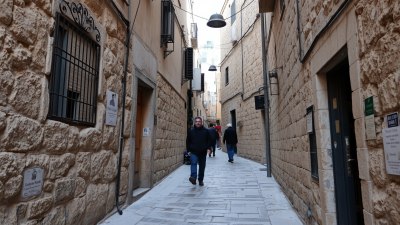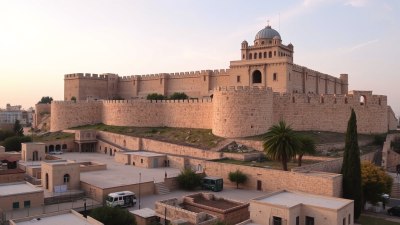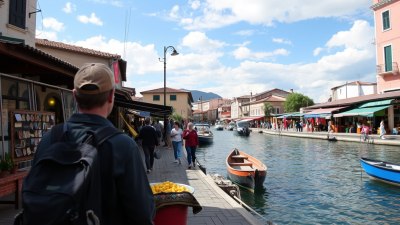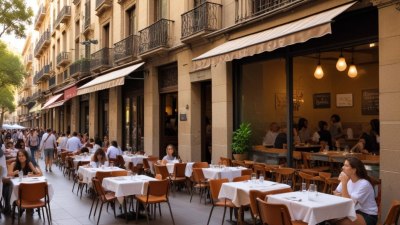Beneath the Postcards Lies the Truth
Explore the hidden narratives behind seemingly simple postcards, revealing histories and emotions.
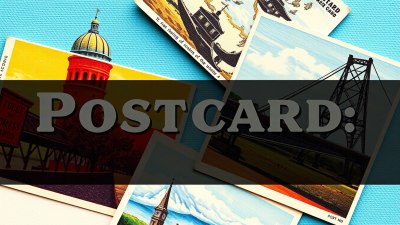
Image created with Flux Schnell
Postcards are often seen as mere souvenirs, colorful snippets of places visited or moments captured, but beneath their glossy surfaces lies a deeper narrative waiting to be uncovered. The act of sending a postcard serves as a form of communication that extends beyond words and images. Each postcard carries with it a story and emotions of the sender, creating a rich tapestry of human experiences that can tell us much about history, culture, and personal connections.
To understand the layers beneath postcards, we must first consider their historical context. Since their inception in the 19th century, postcards have evolved dramatically, serving various purposes from commercial promotions to personal messages between family and friends. Their development reflects the changes in communication technology and social norms.
A Historical Overview
The first postcards began circulating in Europe around 1840, quickly becoming a popular medium for correspondences. Initially, these cards were unadorned and served as a means to simplify communication, allowing people to send quick messages without the fuss of a letter. In the later decades, particularly in the late 19th and early 20th centuries, postcards transformed into more than just a communication tool; they became a medium for art and a means to capture and disseminate cultural and historical moments.
During this period, scenic views of cities, landmarks, and local attractions dominated postcard designs. The Golden Age of Postcards (1898-1918) saw a surge in production, bringing rich colors and embossing techniques that turned them into collectible items. People began to exchange postcards not just to communicate but to share experiences and memories. Each card telling a tale of travel, exploration, and connection to a shared moment in time.
The Role of Postcards in Society
Postcards have permeability in society; they serve as both markers of time and tools for cultural exchange. Local artists, photographers, and publishers create postcards that celebrate unique aspects of their communities, thereby preserving regional identities and histories. A postcard from a small town, adorned with images of local landmarks, can reflect not just a geographical area but the culture, atmosphere, and sentiments of its residents.
When individuals pick a postcard to send, they often choose images that resonate with their experiences or emotions. A postcard featuring a serene beach might encapsulate a vacation of relaxation and joy, while one depicting an iconic historical site may evoke a sense of nostalgia or curiosity. Thus, the selection process adds layers to the narrative of the postcard, intertwining the sender's intention with the cultural significance of the images.
The Emotional Weight of Postcards
Beyond their aesthetic appeal and communicative function, postcards carry emotional weight. The sentiment behind a postcard’s message can unearth personal stories and unveil truths about relationships, aspirations, and struggles. A postcard sent from a distant relative may represent a longing for connection, while one sent during a tumultuous period might reflect hope or a desire for escape.
Consider the practice of sending postcards during wars. Soldiers have used postcards as a means to bridge the emotional and physical distances from loved ones during times of conflict. These cards, often hurriedly written, capture raw sentiments and day-to-day realities faced by soldiers on the front. Through these postcards, we can gain insight into the human experience of war, the impact of separation, and the enduring hope for return.
Collecting Postcards: A Window into the Past
The hobby of collecting postcards, known as deltiology, serves as a fascinating glimpse into history. Collectors often seek postcards that reflect certain themes, time periods, or locations, digging through archives or antique shops to uncover forgotten tales. Each postcard in a collection offers up fragments of history, connecting the collector with stories and experiences that are often lost over time.
Through the lens of deltiology, we can explore changes in art styles, tourism trends, and even shifts in cultural perspectives. Postcards from the early 20th century often reflect a romanticized view of life, showcasing idyllic landscapes, cozy homes, and family gatherings. In contrast, modern postcards may depict more diverse realities, reflecting societal changes and global interconnectedness.
Cultural Significance of Postcards
Postcards have played a significant role in the cultural fabric of different societies. In places like Japan, the tradition of sending postcards during the New Year (Nengajo) is commonplace, allowing individuals to reconnect with friends and relatives. Similarly, in countries with strong artistic traditions, local artists often produce unique postcards that contribute to cultural representation and preservation.
Furthermore, postcards can function as a democratizing force in art and communication. By converting works of art or cultural symbols into postcard formats, they become accessible to a wider audience, allowing people of all backgrounds to own a piece of art or history. This accessibility fosters appreciation and understanding of diverse cultures, creating global connections.
Postcards in the Digital Age
With the rise of digital communication, one might wonder about the future of postcards. While electronic messages have replaced many traditional forms of communication, postcards have found a new niche. Digital postcards, often shared through social media, retain the spirit of their physical counterparts, allowing users to connect and share experiences instantly.
However, the essence of sending and receiving physical postcards remains unmatched. The tactile experience of holding a postcard, reading handwritten notes, and appreciating visual artistry creates a nostalgic connection that digital forms often lack. Many people still cherish receiving postcards in the mail, treating them as small treasures that carry memories wrapped in an envelope.
Personal Stories Encapsulated in Postcards
Each postcard has the potential to encapsulate an entire story or moment in an individual’s life. For instance, a postcard sent from a loved one during a significant life event, such as a wedding or the birth of a child, can serve as a meaningful keepsake, preserving those emotions and memories for years to come. The handwritten notes often contain heartwarming messages, hopes, and well-wishes that transport the receiver back to the moment it was sent.
The urgency of sending postcards during important occasions reflects the desire to communicate love and support, emphasizing the significance of connections. They serve as tangible records of moments that often fade from memory, allowing individuals to revisit their past experiences and emotions.
The Future of Postcards
As the world continues to evolve, so too does the postcard. Innovative designs, interactive features, and sustainable materials are emerging as part of the postcard’s evolution. Artists and creators are merging traditional elements with contemporary aesthetics, reviving interest in postcards as a means of expression.
Moreover, initiatives promoting responsible tourism are emphasizing the importance of supporting local economies through postcard purchases, encouraging travelers to share authentic representations of the places they visit. This renewed interest in postcards holds the promise of preserving their cultural significance while adapting to the modern world.
The Deeper Truth
Beneath the colorful images and written messages of postcards lies a wealth of truth. They embody the stories, emotions, and histories of individuals and cultures, serving as vehicles for connection across distances and time. In a world where digital communication often overshadows physical exchanges, postcards remind us of the beauty of tangible connections. They invite us to reflect on our own stories and the narratives we share with others, enriching our lives with shared experiences, histories, and memories.
